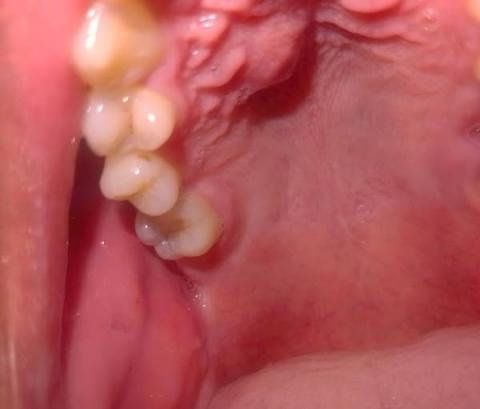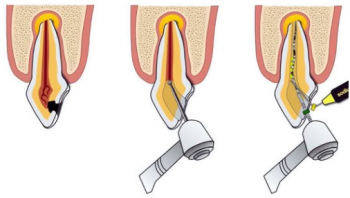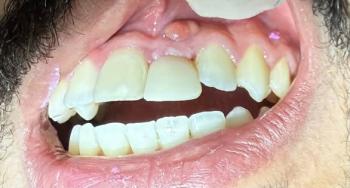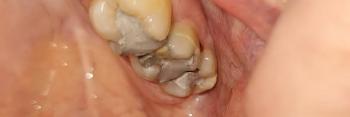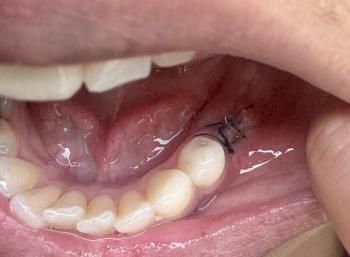Transforming Smiles, Restoring Confidence.
Palatal Gum Swelling: Causes, Treatment, and How to Heal It Fast
Severity:
Teeth Problems:
Case Analysis: Gum Swelling and Palatal Bulge Behind Upper Teeth
Client’s Complaint
“May umbok o bukol sa gilid ng ngalangala (palate) bandang likod ng ngipin. Medyo namamaga, minsan sumasakit pag nadiinan. Gusto kong malaman kung bakit ito nangyari at paano ito gagamutin.”
Clinical Observation (from Image)
The photo shows:
-
A localized swelling or raised area on the upper inner gum near the molars (palatal side).
-
The overlying tissue appears pinkish to reddish, suggesting inflammation rather than a normal anatomic ridge.
-
The nearby molars appear intact but might be harboring deep decay, gum pocket, or previous root canal infection underneath.
Probable Diagnosis
1. Palatal Abscess (Secondary to Tooth Infection)
-
Often caused by untreated tooth decay or failed root canal in the upper molars.
-
Bacteria from the tooth root spread into the bone and create pus accumulation under the palate.
-
The “umbok” is the body’s way of draining infection outward.
2. Chronic Sinus Tract or Fistula
-
If the swelling comes and goes, releasing pus when pressed, it’s likely a draining sinus tract.
-
The infection stays active because the tooth root remains infected.
3. Palatal Cyst or Minor Salivary Gland Infection
-
Less common, but can occur if the swelling is painless and slow-growing.
-
Often results from blocked salivary ducts.
Why This Happened
-
Untreated decay or failed filling/root canal on upper molars.
-
Trapped bacteria inside the tooth pulp or root tip.
-
Sinus infection or poor oral hygiene around the affected area.
-
Could also develop after past dental extraction or trauma to the area.
Treatment Plan and Process
Step 1: Diagnostic Work-up
-
Periapical X-ray or CBCT Scan: Confirms source of infection.
-
Vitality Test: Checks if the involved molar is dead or infected.
-
Pus Culture (if chronic): To identify resistant bacteria.
Step 2: Infection Control
-
Drain pus and irrigate the abscess area with antiseptic solution.
-
Prescribe antibiotics (Amoxicillin + Metronidazole or Clindamycin if allergic).
-
Warm saline rinses to reduce inflammation.
Step 3: Definitive Dental Treatment
Depending on findings:
-
Root Canal Treatment (RCT) if tooth can be saved.
-
Apicoectomy (minor gum surgery) if infection persists at root tip.
-
Tooth Extraction if tooth is beyond repair, followed by bone cleaning.
-
Possible Dental Implant after full healing (usually 3–6 months).
Estimated Healing Time
-
Initial pain/swelling: 3–5 days with antibiotics.
-
Full gum tissue recovery: 2–3 weeks.
-
Bone healing (if surgery or extraction done): 3–6 months.
Home Care Tips
-
Rinse 2–3× daily with warm saltwater or Chlorhexidine mouthwash (0.12%).
-
Avoid pressing or poking the swollen area.
-
Maintain brushing and flossing gently around unaffected teeth.
-
Avoid hot or spicy food during recovery.
When to Visit the Dentist Immediately
-
Continuous pus or bad taste after a week.
-
Swelling spreads to cheek, lips, or under the eye.
-
Fever or pain when chewing.
These are signs the infection is spreading deeper.
Recommendation
Visit a trusted dental clinic nearby for X-ray and treatment.
You can search our verified dentists and clinics via
CebuDentalImplants.com — offering advanced treatments for gum abscesses, root canal, and implant restoration.
Comment (for post or blog use)
If you notice swelling or pus on your palate or gum, don’t ignore it — it’s often a sign of a deep infection under a tooth root. Early treatment prevents bone loss and saves your tooth. Visit your nearest dental specialist today through CebuDentalImplants.com for expert care.

